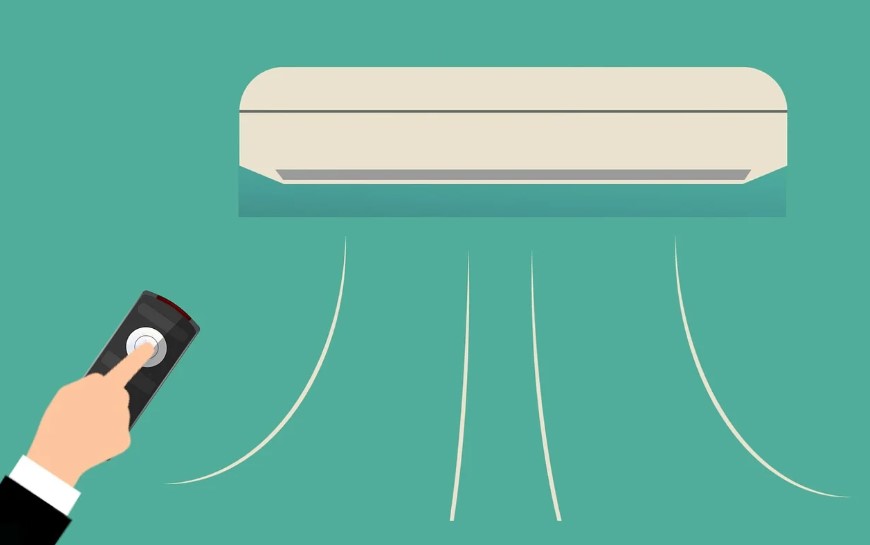Efficient Cooling Strategies for Every Home
As seasons change and temperatures rise, efficient home cooling becomes a priority for many families. Cooling your home effectively ensures comfort and addresses concerns over high energy consumption. The journey towards efficient cooling starts with integrating innovative, low-cost strategies. Installing and utilizing ceiling fans can significantly enhance airflow throughout your home. Pair this with closing blinds or curtains during peak sunlight hours, which can reduce indoor temperatures by blocking heat. These tactics are practical yet powerful steps toward maintaining a cooler temperature indoors. Such services can significantly improve energy efficiency and enhance overall system longevity, preventing the needless expenditure of energy and money.
Beyond these immediate actions, consider the impact of your home’s external environment. Integrating elements like trees and awnings reduces direct sunlight exposure, providing natural cooling benefits. According to experts, tree shading can provide temperature reductions of 2° to 6°F, making it a worthwhile investment for long-term energy savings. In pursuit of broader efficiency upgrades, the U.S. Department of Energy provides extensive resources that delve into advanced energy-saving strategies for residential cooling.
The Importance of Regular Maintenance
The foundation of an efficient cooling system lies in routine maintenance. Unbeknownst to many homeowners, neglecting simple tasks can escalate issues over time, affecting function and cost. A key maintenance component is regular filter changes, which should occur every one to three months, depending on system use and air quality conditions. Clean filters ensure unobstructed airflow, reducing the energy your system needs to cool your home. For homes requiring more substantial interventions, professional AC repair in Manassas, VA, offers tailored solutions to ensure systems run optimally.
Keeping vents free from dust blockages also optimizes air delivery throughout the living space. Professional maintenance plays a pivotal role, too. Scheduling annual inspections allows adjustments and troubleshooting to catch minor issues before they become costly problems. This proactive approach contributes to sustained efficiency and reliability, safeguarding against unexpected service disruptions during peak seasons.
Understanding Varied Cooling Technologies
The world of cooling technology is constantly evolving, offering a wide range of options tailored to diverse needs and environmental considerations. While central air conditioning systems remain a popular choice, particularly in regions with hot climates, other innovative solutions provide compelling alternatives. Ductless mini-split systems, for example, offer flexible solutions ideal for homes without existing ductwork. They deliver targeted cooling for specific zones within the house, enhancing comfort while optimizing energy use.
In addition, evaporative coolers present an eco-friendly choice, especially in arid climates. By leveraging the natural evaporation process, these systems cool air through water saturation, reducing the environmental footprint compared to conventional units. High-efficiency heat pumps are another viable alternative, offering the dual benefit of heating and cooling with heightened energy savings. These solutions align with current trends favoring sustainable and comprehensive home climate management. A CNN report offers a detailed analysis of varied cooling technologies’ latest advancements and efficacy.
Cost-Saving Tips for Cooling Systems
Finding ways to reduce cooling costs without compromising comfort involves more than just decreasing thermostat settings. Implementing cost-saving strategies can create significant differences over time. Installing programmable thermostats provides precise control over cooling schedules, ensuring your systems run only when necessary. This reduces energy waste and lowers bills. Another impactful measure involves improving home insulation and addressing air leaks around windows and doors.
Gaps and cracks in these areas can allow conditioned air to escape, leading your system to work harder to achieve the desired temperature. Sealing these openings is a straightforward yet effective method to enhance efficiency. Additionally, many local utility companies offer energy audits to identify inefficiencies and recommend improvements tailored to your home, providing immediate and long-term savings.
Sustainability and Home Cooling
The pressing need to address climate change has spurred interest in sustainable cooling solutions for homes. This global trend is mirrored in shifts towards energy-efficient appliances and systems designed to minimize environmental impact. By choosing ENERGY STAR-rated appliances, homeowners can significantly reduce greenhouse gas emissions while lowering energy costs by up to 15%. Additionally, integrating renewable energy sources into home cooling systems offers a path toward reduced dependency on fossil fuels.
Staying informed about emerging technologies and practices is crucial for homeowners seeking to balance comfort with eco-responsibility. Cooling innovations promise efficiency and support broader environmental goals, ensuring that future generations enjoy a sustainable planet. Homeowners embracing these technologies can look forward to short-term financial benefits and long-term ecological conservation.
